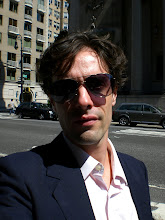
Only about 5% of the world’s oceans have been explored. This program has aimed at bringing the earth’s seas closer to home. In this last installment, the scientific exploration team takes us to the Arctic Ocean, one of the most hostile bodies of water on the planet – and naturally one of the least explored. Global warming, obviously, is changing this ocean dramatically. Already one and a half million square miles of the arctic ice cap have melted in the last thirty years. Paul Rose and Tooni Mahto dive beneath the polar ice cap to see what may be causing the ice cover to shrink – in addition to the increase of air temperature. What we learn is that the more ice melts, the more the surrounding water absorbs heat of the sun light, due to which the water temperature increases, thus causing the underside of the caps to melt from below. With the opportunity at hand, Lucy Blue and Philippe Cousteau Jr. take measurements of the thickness of the ice. Only caps as thick as six feet are likely to survive the summer. Their measurements confirm scientific calculations that much of the polar cap is less than six feet – and thus the loss of the ice cover is only going to accelerate in the near future. This is disconcerting to human survival, because the more ice is lost, the faster global warming will become. Perhaps already in 2013 the Arctic Ocean will be without ice during the summer. As all the world’s oceans are connected with the Arctic, currents will be effected, and thus the Earth’s climate patterns. The importance of the North Pole can thus not be overstated.
The receding ice cover certainly threatens animals who rely on it, and most vulnerable of all is the polar bear. Yet, just as important for the eco-system are the crustaceans near the bottom of the food chain on which even whales feed. The team is very fortunate to spot several dozen white Beluga whales around the fjords of Svalbard. Lucy also examines how humans have exploited these waters for centuries. She takes us to the remains of Smeerenburg (“blubber town”), Europe’s northernmost outpost on Spitsbergen, settled by the Dutch Northern Company in 1619 as a whaling station. Walruses, too, were nearly hunted to extinction for their fat. Now on Spitsbergen, the population has increased to about two thousand – and they may actually be benefiting from the rising temperatures. At the edge of the North Atlantic and Arctic Oceans, Philippe and Lucy are surprised to find a colorful underwater Garden of Eden, of red soft corals and pink anemones, green kelp, as well as starfish and crab. Overall, I guess the Cricket has been too spoiled by David Attenborough’s amazing nature documentaries, because in comparison BBC’s Oceans is disappointing. Throughout the series the focus was very much on the four members of the team, which distracts from the natural beauty that allegedly is the show’s main subject. At times it was nearly impossible to make out what they were saying through their snorkels – nor do I know why we should care whether or not they have seen this species or that natural feature before. There were, to be sure, some beautiful and interesting scenes. And for that I am grateful.
The receding ice cover certainly threatens animals who rely on it, and most vulnerable of all is the polar bear. Yet, just as important for the eco-system are the crustaceans near the bottom of the food chain on which even whales feed. The team is very fortunate to spot several dozen white Beluga whales around the fjords of Svalbard. Lucy also examines how humans have exploited these waters for centuries. She takes us to the remains of Smeerenburg (“blubber town”), Europe’s northernmost outpost on Spitsbergen, settled by the Dutch Northern Company in 1619 as a whaling station. Walruses, too, were nearly hunted to extinction for their fat. Now on Spitsbergen, the population has increased to about two thousand – and they may actually be benefiting from the rising temperatures. At the edge of the North Atlantic and Arctic Oceans, Philippe and Lucy are surprised to find a colorful underwater Garden of Eden, of red soft corals and pink anemones, green kelp, as well as starfish and crab. Overall, I guess the Cricket has been too spoiled by David Attenborough’s amazing nature documentaries, because in comparison BBC’s Oceans is disappointing. Throughout the series the focus was very much on the four members of the team, which distracts from the natural beauty that allegedly is the show’s main subject. At times it was nearly impossible to make out what they were saying through their snorkels – nor do I know why we should care whether or not they have seen this species or that natural feature before. There were, to be sure, some beautiful and interesting scenes. And for that I am grateful.

I'm back bitch! Has the Cricket missed me??
ReplyDeleteIt's been awfully quiet around here without you, Diki Dick! Glad you're back. Got some catching up to do (-:
ReplyDeletei do i do! dont quit gossip girl midway. btw i saw an episode or two and im like what?? That Juliet character has signs all over her that she should not be trusted. I mean Nate's supposed to be going to Columbia no? He doesn't seem to have a modicum of intelligence.
ReplyDeleteJuliet has a pretty smile. It makes you forget.
ReplyDelete